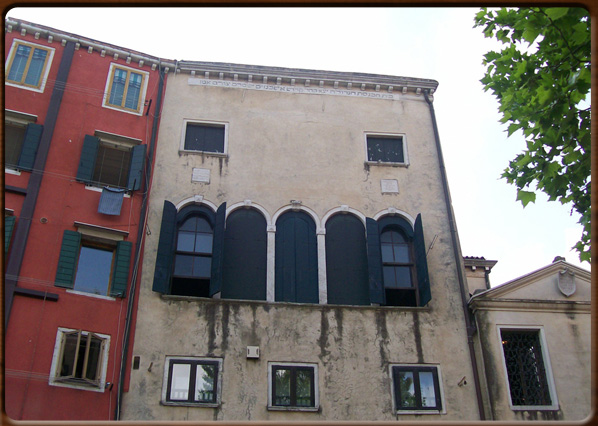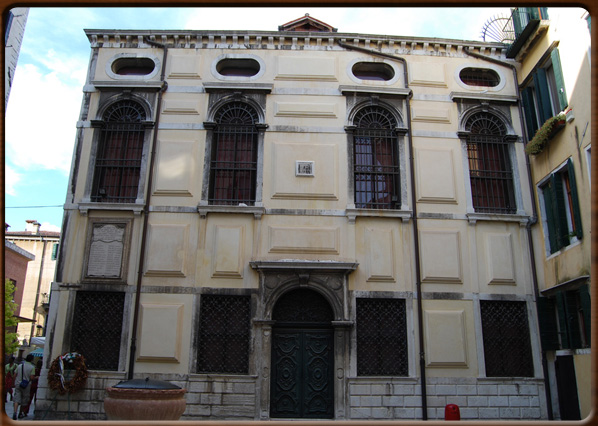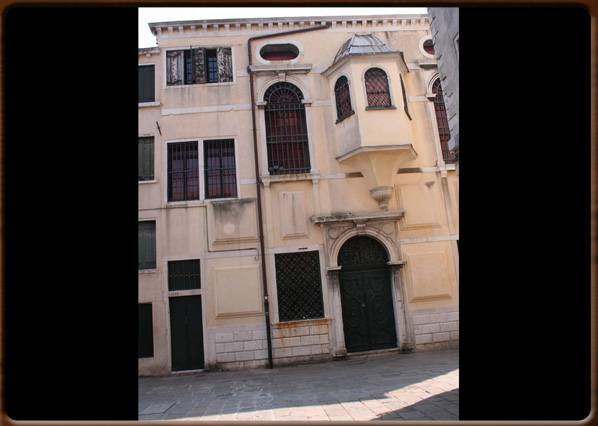
Synagogue Grande Tedesca.

Schola Levantina in the Ghetto Vecchio.

Façade of the Schola Levantina in the Ghetto Vecchio.



No video
The synagogues, especially the oldest ones, have a very simple exterior, not so much due to religious requirements, but rather to practical and institutional reasons. The streets of the Ghetto were unsuitable for the flamboyant Baroque style, while the laws of the Venetian Republic required that non-Christian places of worship should be discrete, blending in with the surrounding environment. Compared to the Baroque Christian churches of the time with their many paintings and statues, the interiors of the synagogues are devoid of decorative elements.
Indeed, figurative art has no place in the Jewish tradition, which tends to detach divinity from any kind of representation, as idolatry is considered as one of humankind’s most serious sins.
Synagogues were used as meeting places and high-level study centres. The synagogues built in Venice are (in chronological order):
The Scola Grande Tedesca
The oldest synagogue in Venice (1528-1529 – Ashkenazi Rite), this has a central plan, i.e. with the pulpit in the centre.
The Synagogue of the Scola Canton
The Scola Canton was the second synagogue to be built in Venice (1531-1532), it has a “bifocal” plan. Despite its date of construction, the Scola Canton now has a somewhat Baroque appearance with rococo details owing to interventions in the 18th Century.
The Synagogue Levantina
This synagogue was founded in 1538 but was rebuilt in the second half of the 17th Century. Although there are no documents proving this, it is said that Baldassarre Longhena was involved, as examples of his style are evident in the façade, while Andrea Brustolon was responsible for the fine pulpit.
The Synagogue Italiana
The Italian synagogue, built in 1575, is the simplest of Venetian synagogues. It is also the most luminous, thanks to five large windows that open onto the south side of the square.
The Synagogue Ponentina (or Spagnola)
La Scola Spagnola was founded in 1555, but later rebuilt in the first half of the 17th Century. This is the most impressive of Venetian synagogues with a very dramatic impact, thanks to its wide two-flight staircase leading to a vast hall of worship.
1500 - - rev. 0.1.8